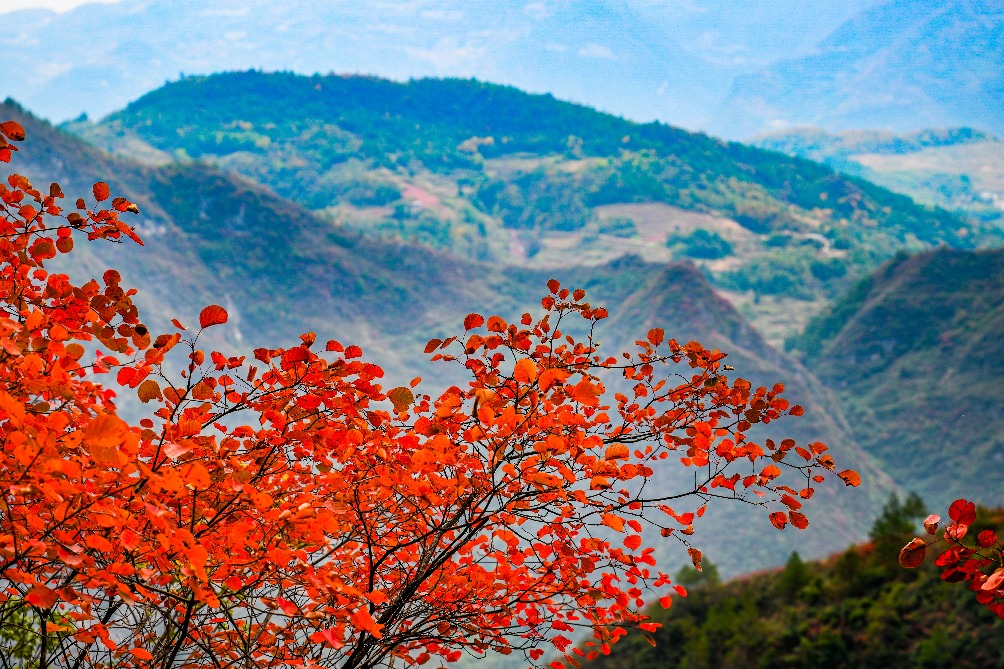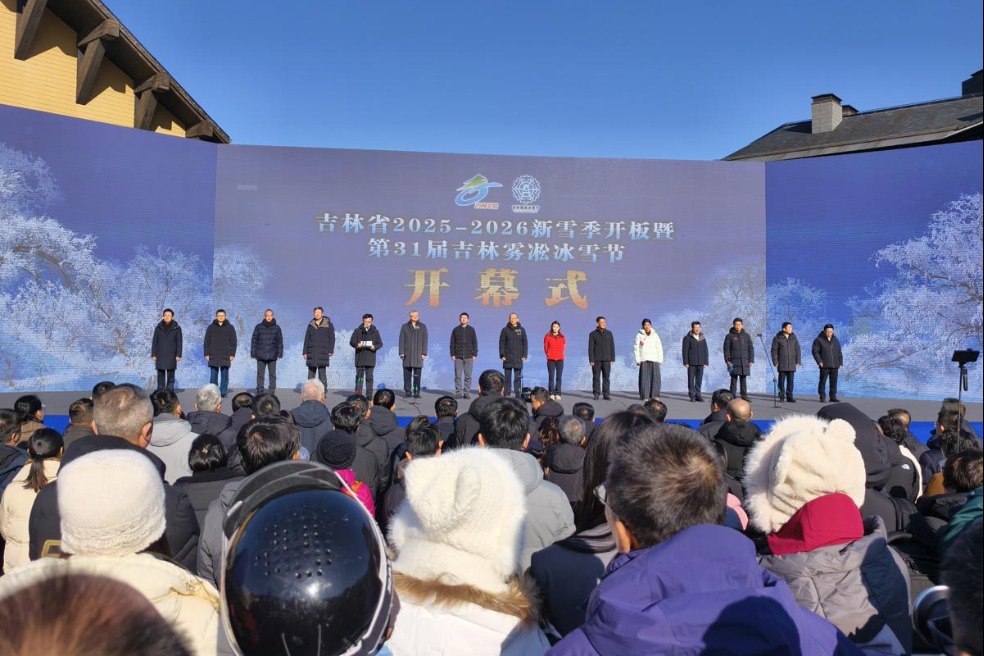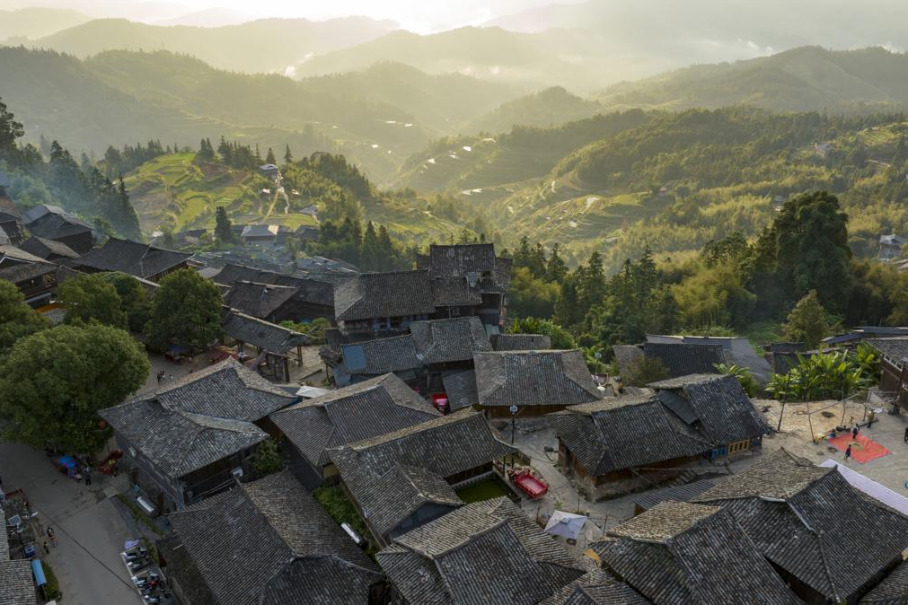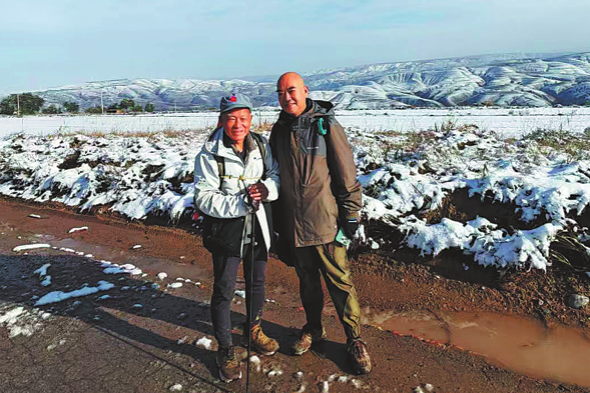Rare monkeys multiply in karst and cane


NANNING-In Chongzuo, Guangxi Zhuang autonomous region, limestone peaks jut up from lush sugar cane fields where farmers keep a close watch on white-headed langurs, one of the rarest primates on the planet.
Once driven to the brink of extinction in Chongzuo due to excessive hunting and habitat loss, the monkeys are thriving again with special care and attention from rangers and locals. Chongzuo has been designated as an exclusive habitat of the species.
Unique creature
Wu Xiaolan, a resident of Qunan, a hamlet tucked in the lowland of Chongzuo's karst hills, had never heard of the species before she arrived in the area in the mid-1990s. However, she fell for the monkeys at first sight.
"I still remember the thrill of watching a mother carrying two golden babies in her arms, or an entire troop leaping over the crags," Wu said. "My only regret is that I couldn't capture their images as there were no smartphones back then."
White-headed langurs are born with striking golden-orange fur. The adults have dark-colored faces that contrast with the white fur on their shoulders and heads. The color of their fur helps them blend easily into the monochrome of the karst hills, the monkeys' natural habitat.
About 90 percent of langurs live in four isolated areas of the Guangxi Chongzuo National Nature Reserve. Each family occupies a cluster of hills, with leaves being their primary source of food.
The animal is listed as critically endangered by the International Union for Conservation of Nature, and it is classified as a State first-class protected animal.
Strong protection
In the late 1980s, poaching was rampant and the langurs, whose bones were coveted for medical purposes, were killed with traps and shotguns.
Farmers worried about wildlife intrusion would also set up spring-loaded steel traps around their farms to catch the primates.
But rangers such as Tang Lifeng from the Zhuang ethnic group have helped improve the survival chances of the langurs. A ranger in the reserve for 37 years, he leads a team of two to three officers that treks 30 kilometers into the jungle up to three times a week.
"Over the past 30 years, we've rescued at least six trapped white-headed langurs," Tang said.
On their treks, they look out for unlawful activities such as poaching, unauthorized construction and illegal logging. "Sometimes we stay in the bush for a while to count the monkeys and record their population changes," he said.
With the aid of technology such as infrared cameras, remote monitoring systems and drones, rangers can gain a clearer idea of the health of the population.
The rangers also receive satellite images from the local forestry department that help them react quickly to any illegal activities in the reserve.
Due to the strict enforcement of conservation policies, the reserve reported zero cases of langur poaching in the past decade. The population of langurs in Chongzuo has surged from around 300 in the 1980s to more than 1,300 today.
The local forestry department has ensured that each hamlet has at least one part-time ranger, allowing the public to report illegal activities and curb poaching.
In the late 1980s, local villagers also used to prepare for spring planting by using the slash-and-burn technique to improve soil fertility. This method sometimes started forest fires that damaged wildlife habitats.
Poaching and slash-and-burn agriculture became less tempting as sugar cane plantations thrived in the mid-1990s and locals' incomes improved, said Zhang Kairong, a farmer and part-time ranger in Qunan.
The central government has also pushed for stricter legislation and law enforcement and raised public awareness about safeguarding the environment, Zhang added.
Coexistence
Since 2010, more langurs have settled in the hills around Qunan after residents took it upon themselves to protect the monkeys and their environment.
Villagers have set up a team of volunteer rangers and opened nature awareness camps. Local children are also encouraged to collect trash in public areas.
Wu Xiaolan and her fellow female farmers offer eco-friendly tours to visitors interested in the langurs.
Meanwhile, the reserve has been exploring ways to solve habitat fragmentation caused by existing farmland and the intrusion of roads.
Habitat fragmentation is likely to intensify inbreeding, lowering the genetic diversity of the species, said Wu Jianbao, head of the reserve.
The reserve has built two "corridors" constructed with reinforced concrete and rails to protect the monkeys from road vehicles. Pathways have also been established to coax langurs along safe migratory routes.
"The corridors are expected to restore connectivity between habitats and facilitate the migration of the monkey population more safely," Wu Jianbao said.
Xinhua
- 3.43m candidates have signed up for 2026 national postgraduate entrance exam
- China aims to cover key industrial emitters in carbon market by 2027
- Hiker returns phone lost on remote trail for three years
- Researchers in North China help reveal key brain spatiotemporal information processing mechanism
- China holds live-fire drill in Yellow Sea, vessels warned
- Autoflight unveils integrated vertiport for eVTOL aircrafts




































